A73A in CQWW SSB 2011
This year I had to honor to be invited by the Qatar Amateur Radio Society (QARS) to operate the CQ WW SSB contest with them. The station is set up in a field day style on the northern tip of Qatar, about 100km away from the capital Doha. We are directly located at the beach and used almost exclusively vertical antennas. A73A entered in the category Multi Operator / Multi Transmitters, running 6 Stations in parallel. Keep on reading for some pictures and lessons learned.
The location
The location was selected very carefully. The station was located in a bay on the northern tip of Qatar surround by almost 260º of saltwater. Due to the nature of this bay, the water was very shallow and even with stronger winds, there were no waves on the water. From the Gulf region, Europe and the US are in the same heading direction which favors a simpler antenna setup.
Antenna setup on the High-bands (10m-40m)
On all high-bands (10m-40m) we used a phased array of 2x 2el N6BT Bravo verticals. These parasitic two-element vertical arrays consist of a driven element and another element which can be alternated with a coil & relay to act as a reflector/director. The big advantage of these antennas is their physical dimensions. They can be easily installed by one person. With their two resonant radials, no additional radials have to be installed. The driving element was fed through a W2DU current balun. Driving the antennas with 1,5kW heated up these baluns excessively. After 39 seconds key down you couldn’t touch them anymore. A few seconds later they went into saturation and significantly and worsened the SWR of the antenna. I’m not sure if these high amounts of common-mode current is a design problem of the antenna (feeding the antenna, not on Lambda/4) or selecting the wrong kind of ferrite material for the W2DU balun.
Anyhow, the antennas worked great. Supplemented with a WX0B Stackmatch II Plus (enabling InPhase / Out of Phase) we were able to cover 3 direction with each double pair of verticals.
- Endfire (Reflector + Driver) towards EU / NA
- Endfire (Director + Driver) towards VK
- Broadside (The two vertical arrays out of phase) towards LU/PY and UA
Unfortunately, one of the stack matches was wired wrong and we transmitted the first day on 40m always broadside. The deep null in the antenna pattern towards EU/NA resulted in very few QSOs. Fortunately, we found the problem the second day so that we could at least recover a bit.
The only Yagi we had was an A4S connected to the 10m station. Within the same beam direction, the verticals were always louder than the Yagi. However, the Yagi became useful in working multipliers that were off the main beam directions of the vertical array.
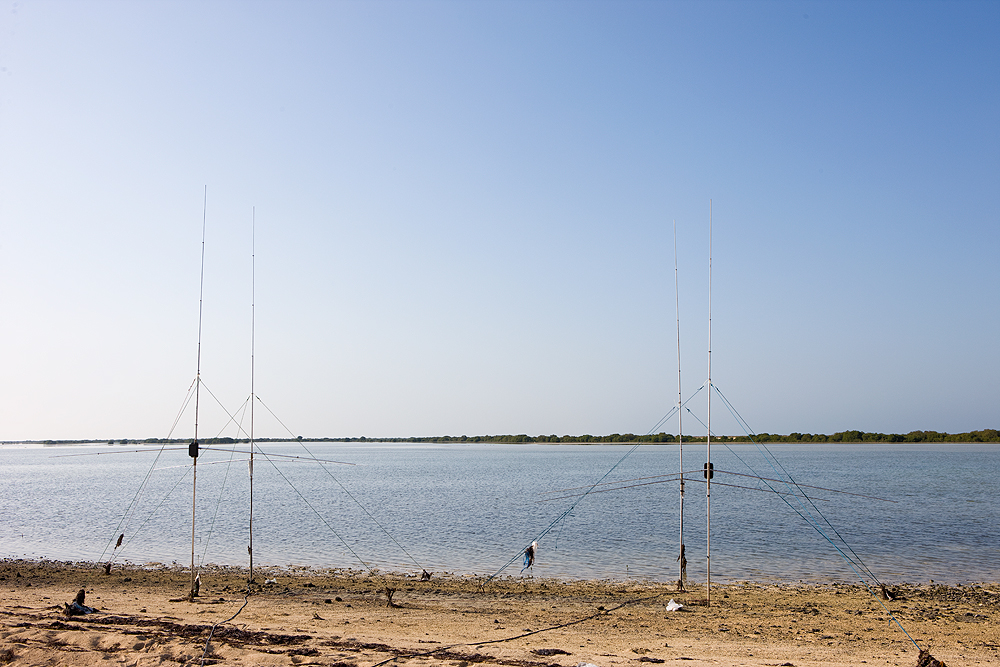
two N6BT parasitic vertical arrays phased with 0º or 180º with halfwave spacing

15m and 20m N6BT vertical arrays with 80m 4-Square in the background
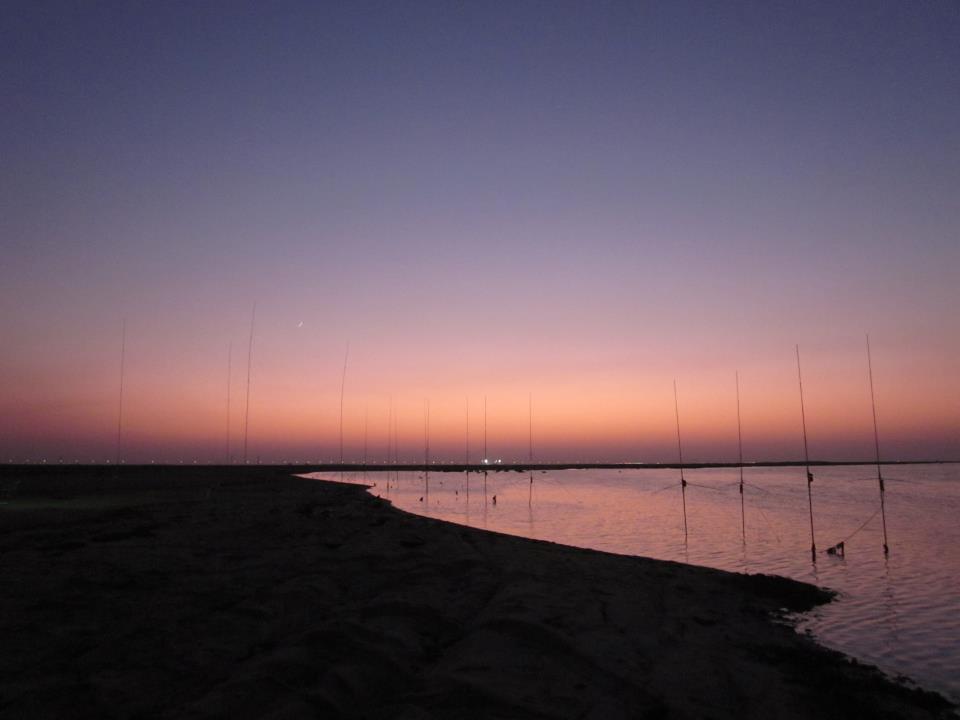
Sunset: Vertical arrays for 10m, 15m, 20m and 4-Square for 80m
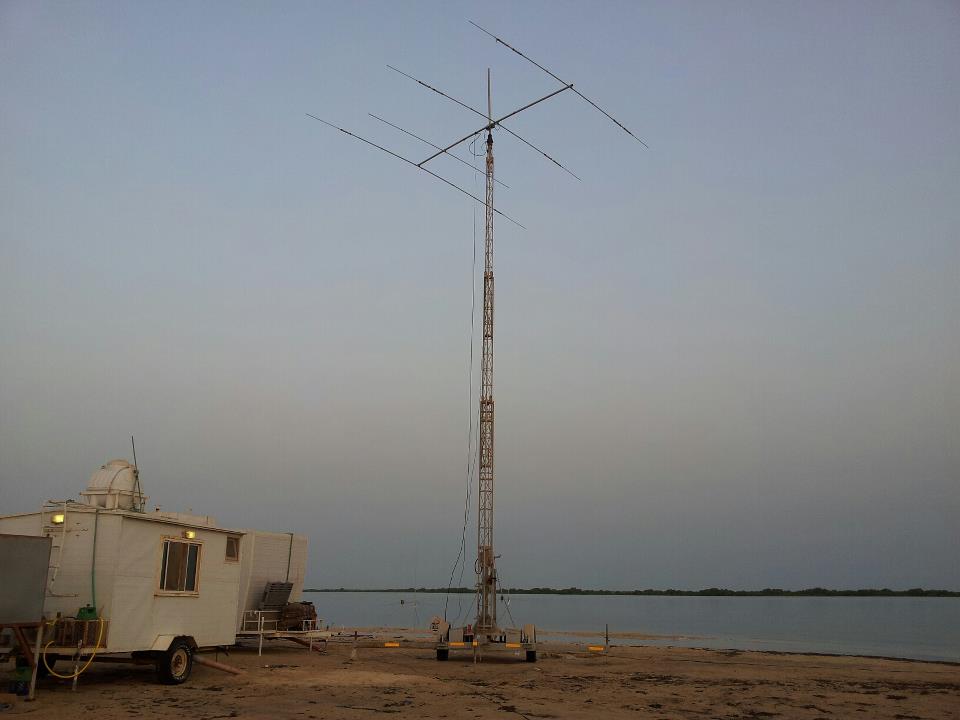
An A4S was used on a crank-up tower as the secondary antenna on 10m; located next to the shack
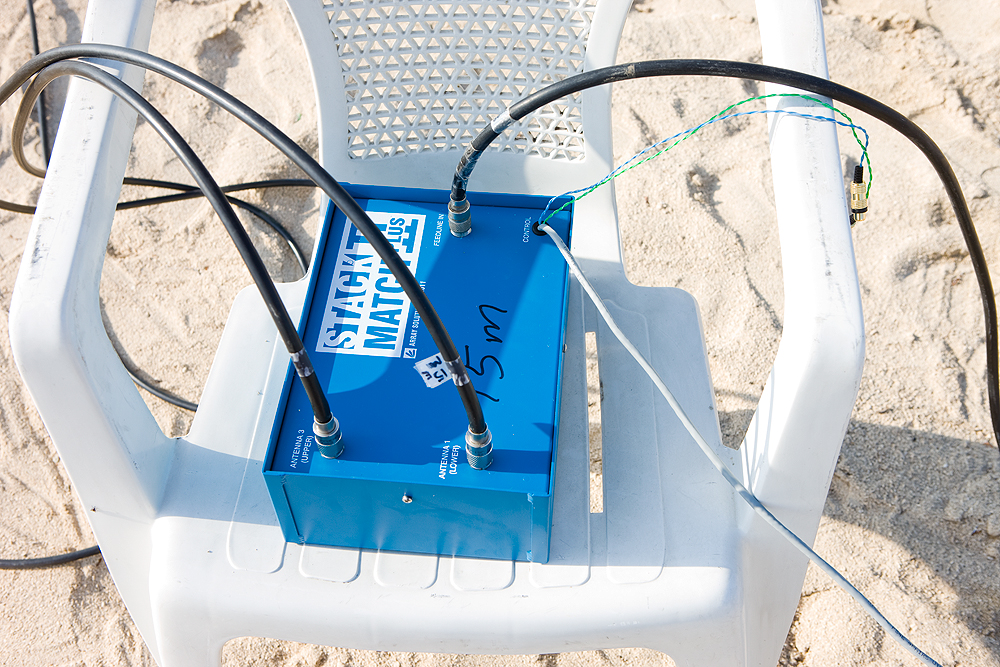
A plastic chair ensures that the Stackmatch does not get in contact with the water during high tide
Antenna setup on the Low-Bands (80m & 160m)
On 80m we set up a classical 4 Square with two elevated radials for each vertical. The antennas were standard aluminum tubes sold by DX Engineering. The 20m tall verticals were phased with a Comtek Coupler enforcing the right currently at the feed point with a Quaterwave 75 Ohm Transformation line.
160m had another 20m tall aluminum vertical with an L-extension making the antenna resonant on 160m. Two elevated radials were added.
All antennas performed amazingly well. Especially the front/back and front/side of the 80m 4-Square were very impressive.

160m L-Antenna with two elevated radials during sunrise
Receiving antennas
Unfortunately, both, our beverage towards EU and the K9AY loop didn’t work. While having some kind of ground loop noises on the Beverage (unfortunately we couldn’t find the root of the problem in time) the K9AY worked equally in all directions. I’m personally somehow fed up with this antenna now. I´ve already tried several in different parts of the world with kits of different manufacturers and non of them worked properly.
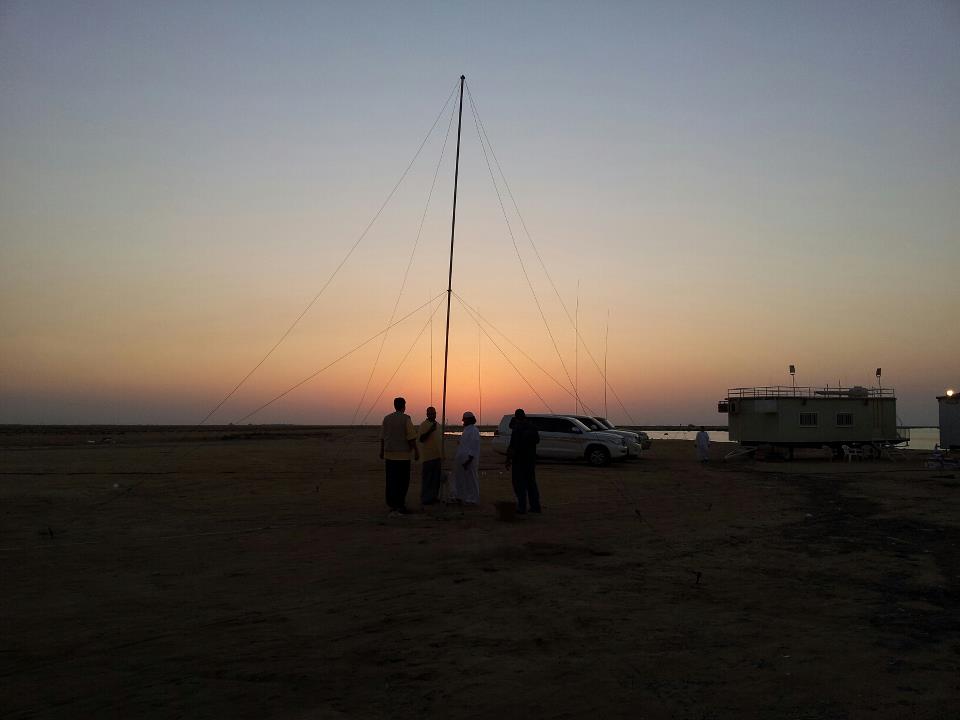
Team building up the K9AY. Shack & 80m 4-Square in the background
The Shack & Infrastructure
The whole operation was split into four temporary housings of different sizes. Two were used as shacks, one for sleeping and one for bathroom and kitchen. All of them had were airconditioned which is in Qatar a necessity rather than a luxury. Within the Shacks we used almost on all bands the same setup:
- 1x FT2000 or FT1000MP MK-V
- 1x Microham MK2
- 1x ACOM2000A
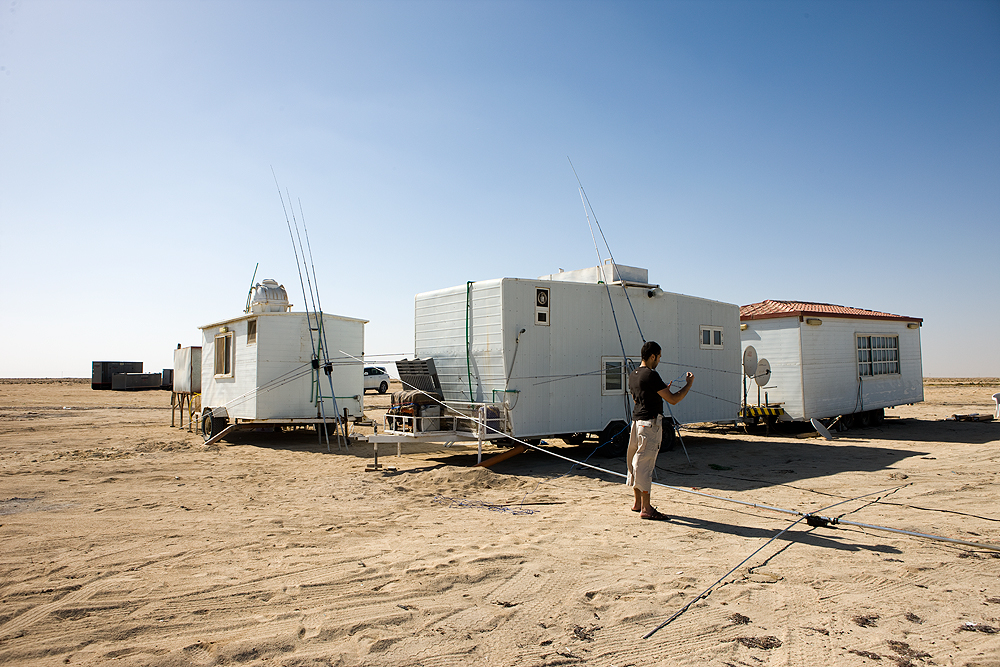
The A73A campsite during the CQWW SSB preparations

Main Shack @ A73A with 20m, 40m, 80m, and 160m operating positions

A rented power generator provided more than sufficient power

A73A - DH1TW operating 10m in the secondary shack (15m station is in the background)
The operators

A73A consisted of a multi-national mainly of the GCC states. Here is the list of operators:
- A71BX, Ali
- A71CV, Abdulla
- A71Co, Khalid
- A71AM, Saif
- A71AD, Rashid
- A71EL, Mohammad
- A41MX, Farid
- A61ZX, Ibrahim
- HZ1DG, Abdulrahman
- 9K2RR, Faisal
- 9K2HN, Hamad
- K5GN, Dave
- DH1TW, Toby
The Contest
In general, the conditions were amazing all over the whole weekend. I had the pleasure to work most of the time on 10m (during the day) and 160m during the night. 10m was by far the best band. We finished with almost 4000 QSOs and I hardly remember another contest having so much fun in working the pileups.
However, if you are more or less the only station from a country, the pileups can easily get too big. This means that there are so many stations calling that you can’t identify the complete callsigns without asking. This slows down the rate.
Here is our claimed score:
Station: A73A
Class: M/M HP
QTH: Qatar
Operating Time (hrs): 48
Summary:
Band QSOs Zones Countries
-------------------------------
160: 340 13 62
80: 1134 27 92
40: 1081 27 101
20: 2280 40 145
15: 2815 40 147
10: 3978 40 161
-------------------------------
Total: 11628 187 708 Total Score = 29,229,805Lessons Learnt
- Always have proper Antenna Measuring Equipment with you. Good options are DG8SAQ VNWA or the Funkamateur Antenna-Analyzer. An MFJ-259 is the last alternative.
- There is a small high tide and a big high tide. Make sure all the material is high enough above the water and prepared for the big high tide.
- CAT5 is not ideal for wiring your antenna switches. The wires are ridged, so be very careful, they break easily.
- Always plan 30% more time for setting up the stations than planned. Something always doesn’t work.
- Proper Tools are indispensable. For the first time, I used the DX-Engineering coax cable prep tools. It can be so easy to make Rg213 cables with properly connected PL-259s!
Conclusion
During the 7 days which I stayed in Qatar, I closed a lot of new friendships. I was impressed by the hospitality of my hosts. I had an awesome time and I’m very thankful to the Qatar Amateur Radio Society for inviting me to this amazing event.

New friends taking the last picture after the disassembly of the station
Credits
Pictures have been taken by A71BX, HZ1DG, and A41MX